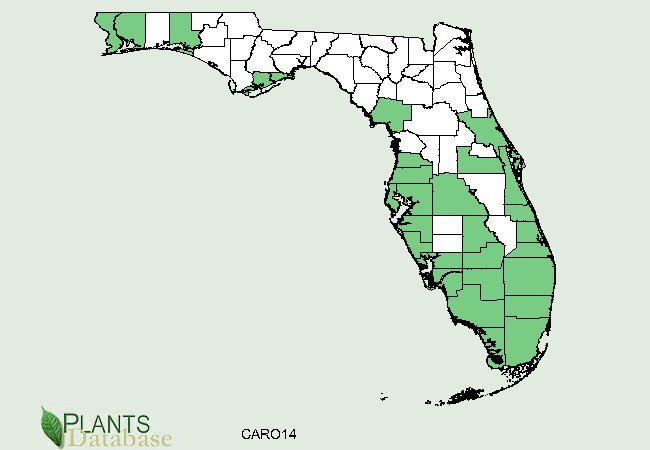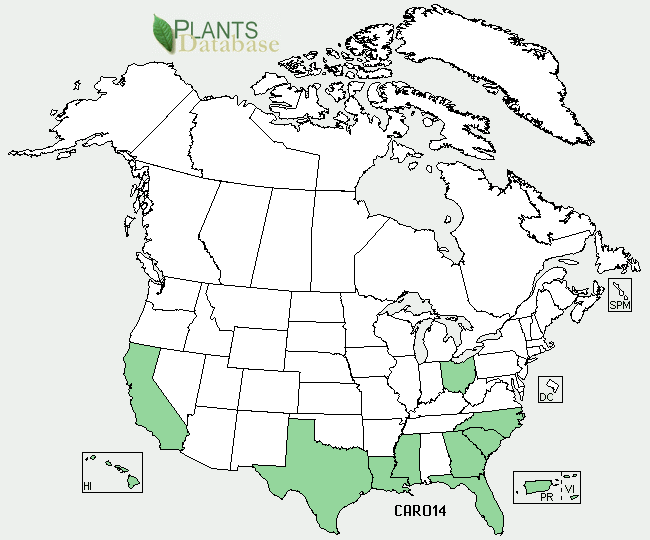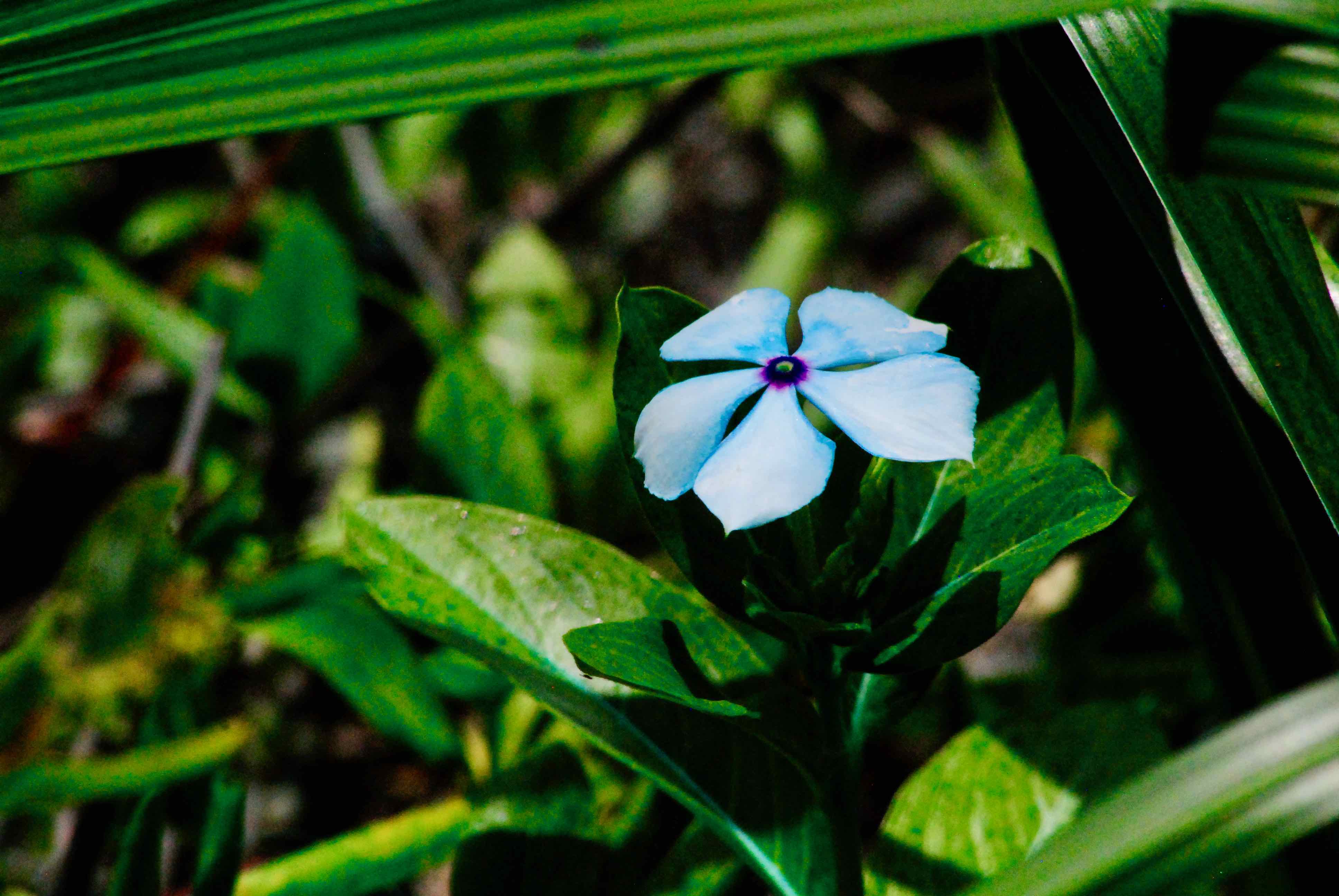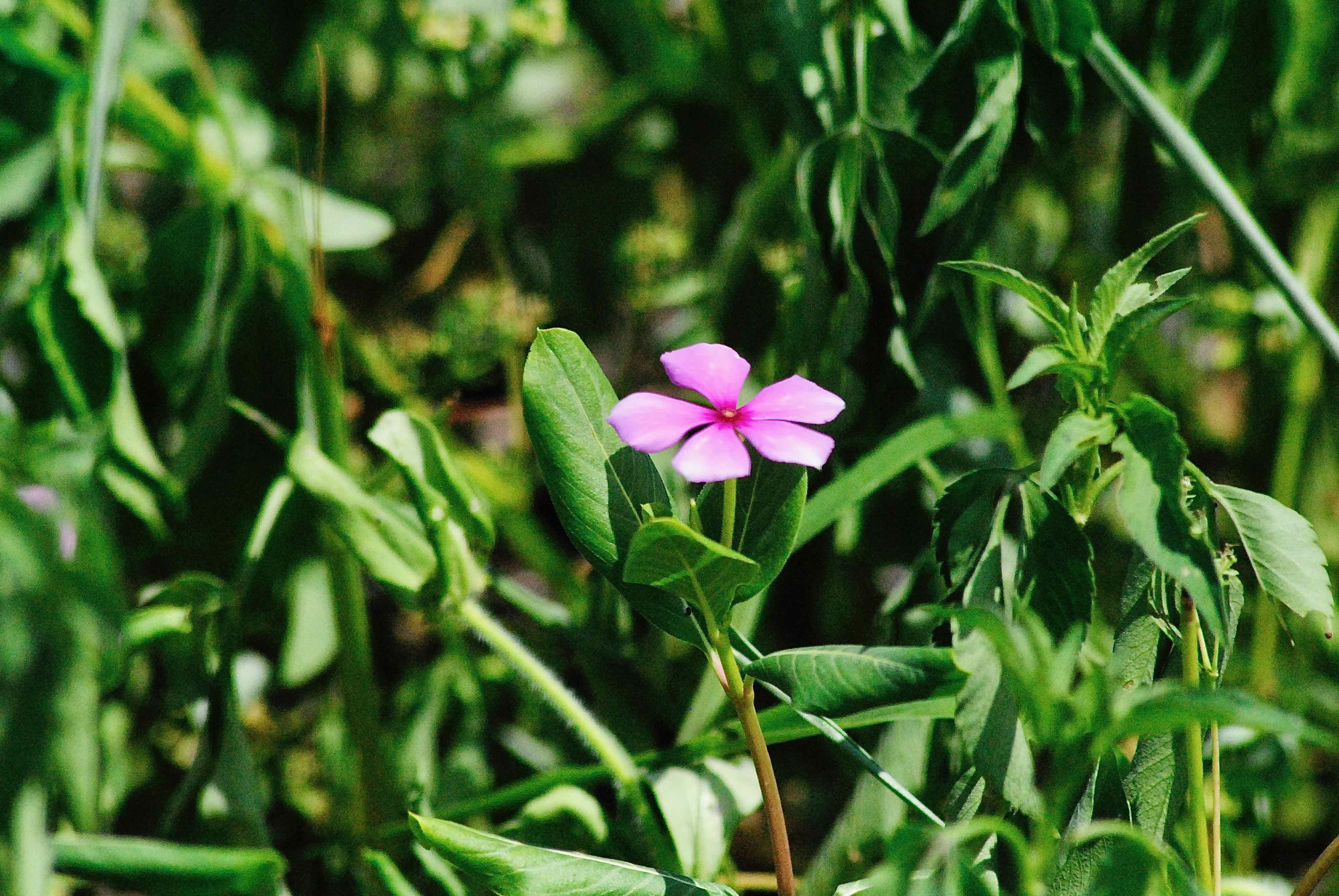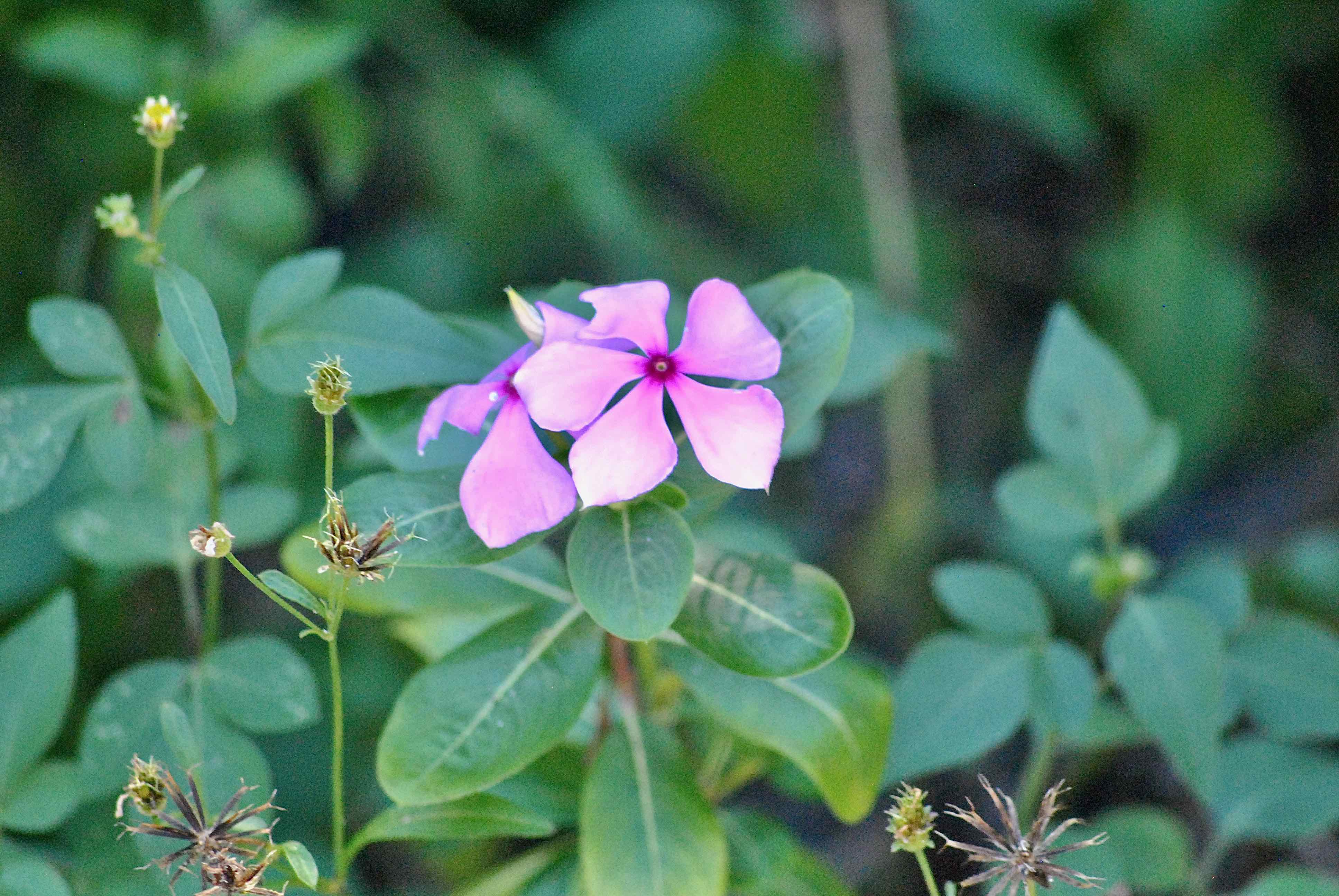
Madasgascar periwinkle, photograhed at Yamato Scrub Natural Area, Boca Raton, Palm Beach County, in August 2014.
This might look like just another pretty flower, and a common one at that. But what you're seeing in the photographs on this page is an important weapon in the war on cancer.
Not in this form, of course, but Madagascar periwinkle, Catharanthus roseus, is the source of a major drug used to treat certain types of cancers. And that makes it Exhibt A as to the importance of preserving plant species all over the world. As you might guess from the name, Madagascar periwinkle isn't a Florida native. In fact, we'd call it borderline invasive, although it's not officially so considered. It's hard to find a natural area, park or preserve in the region where Madagascar periwinkle hasn't found a home for itself.
The irony is that this semi-invasive is actually an endangered species on its home turf, Madagascar, where slash-and-burn agriculture has diminished its habitat. Cultivars of this plant are prized among South Florida gardeners, indeed worldwide, because of their ability to withstand heat and flower in the hottest months. The problem is that Madagascar periwinkle tends to escape civilization and establish itself where it's not supposed to be. It is considered an invasive species in some parts of the world where it has become naturalized. While it is nearly ubiquitous in South Florida, it's somewhat better behaved and hasn't quite merited invasive status. It doesn't dominate habitats to the point of crowding out other plants.
It is certainly gorgeous enough. The flowers are generally pink with red center, but can be white as well. We've even seen one with a bluish tinge to it. Leaves are oblong, with a distinct white center vein and grow in pairs opposite each others. The stems are reddish. Madagascar periwinkle is a perennial; if it lives long enough, it can get shrubby.
Madagascar periwinkle is a part of Apocynaceae, or the dogbane family, members of which generally have a latex-like sap that is poisonous. Madagascar periwinkle is no except. But back in its home range, our guy is also widely used in traditional medicine to treat a multitude of conditions, including diabetes.
Researchers in Canada wanted to find out if these traditional cures worked and if so, what chemicals were doing the heavy lifting. In the process, they noticed that certain chemicals the plant produced were killing white cells in the lab animals they were using. This led to the discovery of vinblastine, which is now used to treat leukemias, lymphomas, lung and testicular cancers and others. How important is vinblastine? It's on the World Health Organizaton's list of essential medicines. A vital drug from a plant threatened with extinction.WebMD says that despite safety concerns, Madagascar periwinkle is still touted as a natural cure.
Other names and spellings: Madagascar-periwinkle, vinca, old-maid, rosy periwinkle, pink periwinkle.
Yamato Scrub Natural Area
Click on photo for larger image
U.S. Department of Agriculture Distribution Maps
